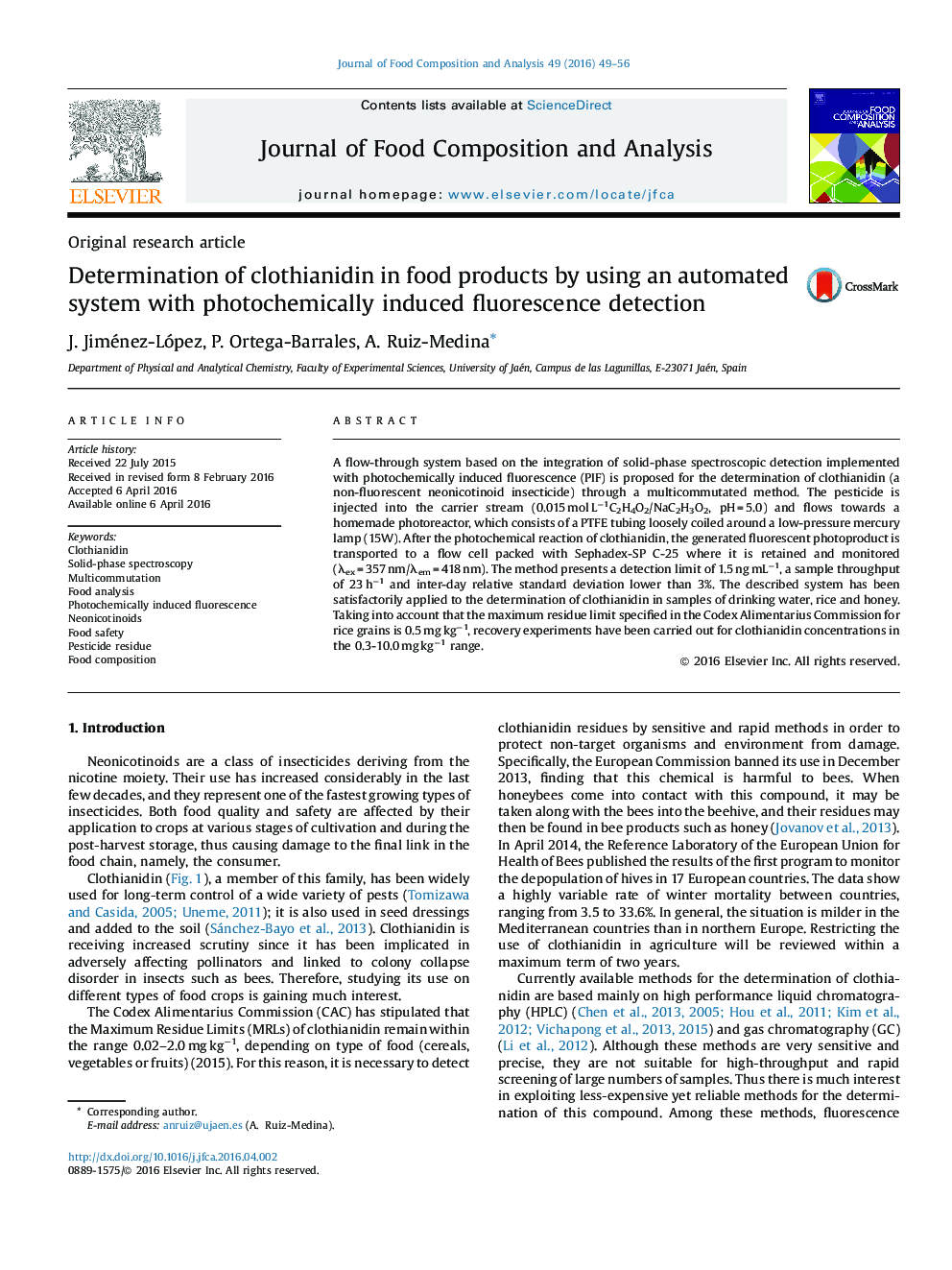| Article ID | Journal | Published Year | Pages | File Type |
|---|---|---|---|---|
| 1218058 | Journal of Food Composition and Analysis | 2016 | 8 Pages |
Abstract
A flow-through system based on the integration of solid-phase spectroscopic detection implemented with photochemically induced fluorescence (PIF) is proposed for the determination of clothianidin (a non-fluorescent neonicotinoid insecticide) through a multicommutated method. The pesticide is injected into the carrier stream (0.015 mol Lâ1C2H4O2/NaC2H3O2, pH = 5.0) and flows towards a homemade photoreactor, which consists of a PTFE tubing loosely coiled around a low-pressure mercury lamp (15W). After the photochemical reaction of clothianidin, the generated fluorescent photoproduct is transported to a flow cell packed with Sephadex-SP C-25 where it is retained and monitored (λex = 357 nm/λem = 418 nm). The method presents a detection limit of 1.5 ng mLâ1, a sample throughput of 23 hâ1 and inter-day relative standard deviation lower than 3%. The described system has been satisfactorily applied to the determination of clothianidin in samples of drinking water, rice and honey. Taking into account that the maximum residue limit specified in the Codex Alimentarius Commission for rice grains is 0.5 mg kgâ1, recovery experiments have been carried out for clothianidin concentrations in the 0.3-10.0 mg kgâ1 range.
Keywords
Related Topics
Physical Sciences and Engineering
Chemistry
Analytical Chemistry
Authors
J. Jiménez-López, P. Ortega-Barrales, A. Ruiz-Medina,
